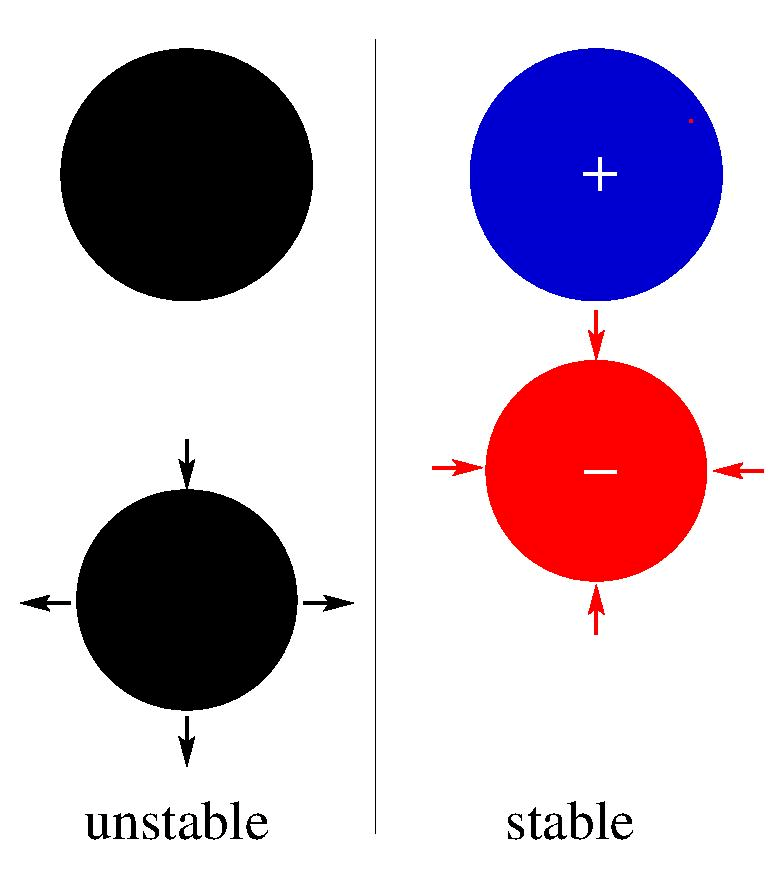
Can arrangements of particles be held together by static electricity? Samuel Earnshaw, a British mathematician, proved as early as 1842 that no stationary arrangement of particles in a vacuum can be stable. An informal reading of this theorem, nowadays associated with Earnshaw’s name, is that electrostatic interactions are inherently destabilizing. Stable configurations of uncharged particles have not been observed in fluids. We found that putting charged particles in a fluid can give rise to a new interesting story. We discovered theoretically stable configurations of charged microparticles in a viscous fluid. We found that charged microparticles settling in electrically neutral fluid can rearrange their positions to form stable doublets with larger particles over smaller, denser ones. This finding open sa new avenue for the dynamics of polydisperse systems of many charged particles. Our investigation of microparticle stability in a fluid was inspired by the recent development of modern technologies such as microfluidics, Lab-On-Chip, medical diagnostics, experiments with bacteria or algae, and the design of innovative fluid-based materials and devices - e.g. to carry drugs or treat wastewater. In such systems, particles are often charged and polydisperse.
C.I. Trombley, M.L. Ekiel-Jezewska, Stable Configurations of Charged Sedimenting Particles, Phys. Rev. Lett. 121, 254502
 |









